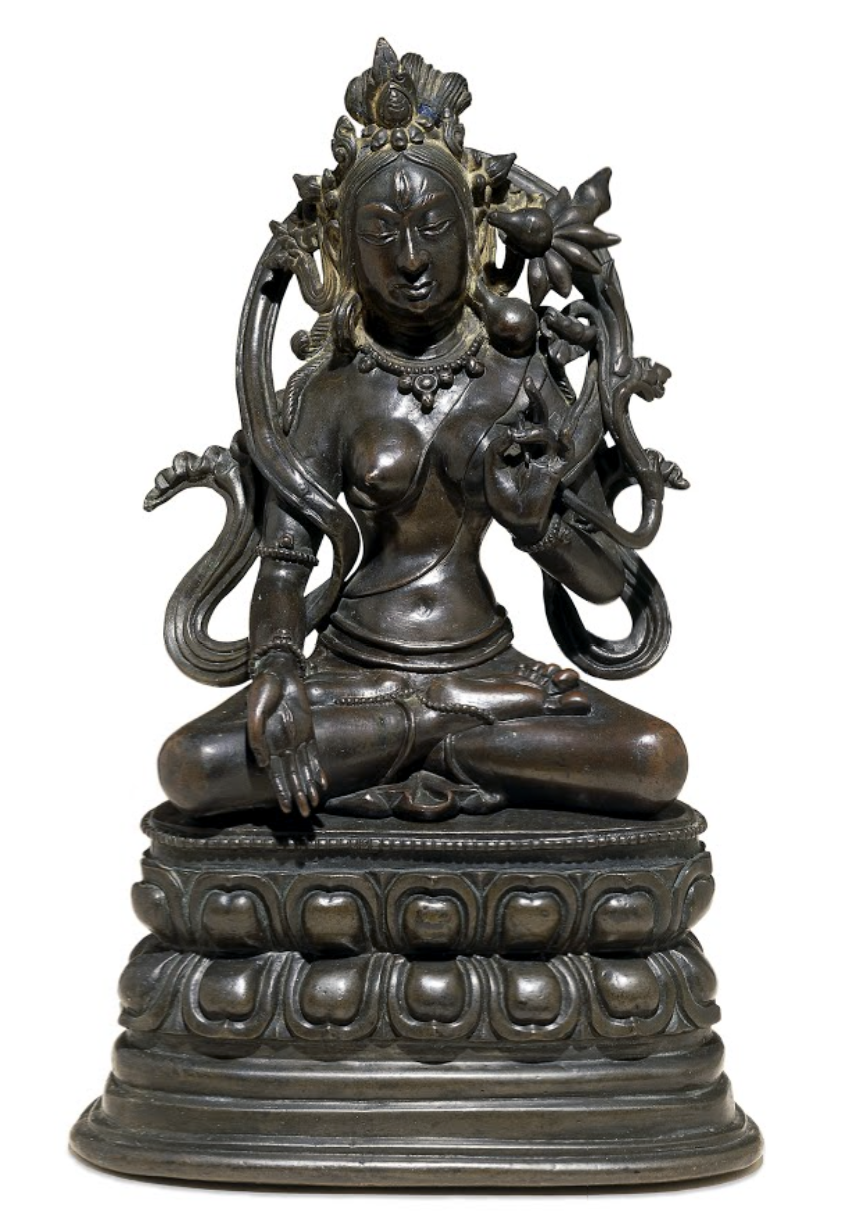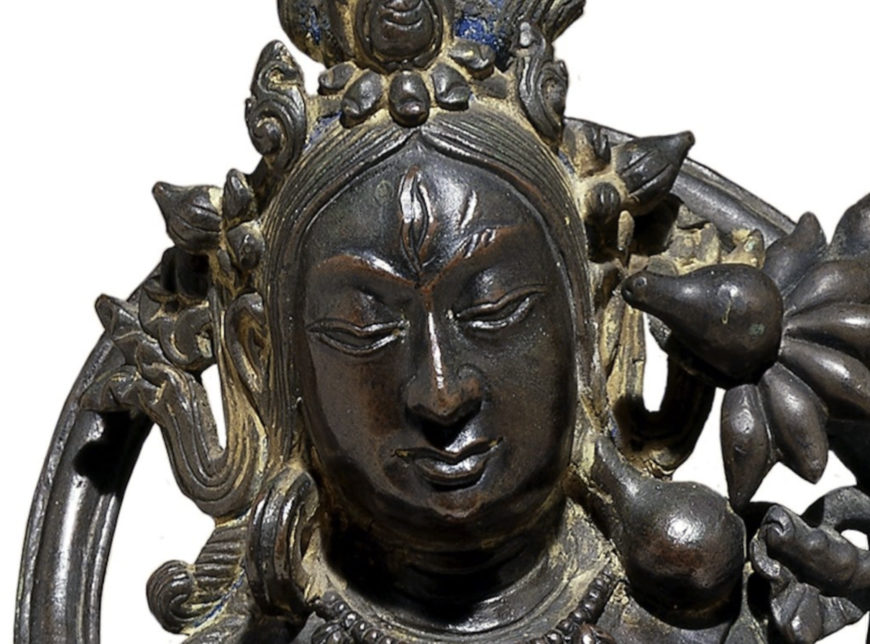As Buddhism developed in India and the Himalayas, the male bodhisattva were joined by female counterparts who assumed individual identities. Tara is the most popular female deity in Tibet. She is the consort of Avalokiteshvara, from whose compassionate tears she was born. She is the embodiment of the miraculous activities of all the bodhisattvas. Tara is worshipped for her assistance in overcoming obstacles on the path to enlightenment and her name means ‘one who saves’.
The seventh-century Tibetan king Songtsen Gampo had two wives, one Nepali and one Chinese. Both were regarded as emanations of Tara and were instrumental in the spread of Buddhism in Tibet.
Here Tara is shown sitting upon a high lotus throne in the full-lotus posture. Her right hand is in the gesture of charity over her knee, while her left hand holds a lotus flower, which curls over her shoulder. The additional eyes in her forehead, the palms of her hands and the soles of her feet signify her ability to see suffering in all parts of the world.
© Trustees of the British Museum



